Invasive Herbs for Herbal Tea
Last Updated: Sep. 28, 2017
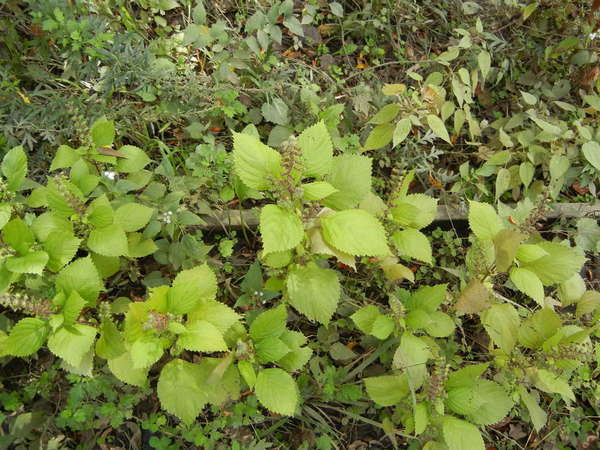 Perilla frutescens, or shiso, growing in the John Heinz National Wildlife Refuge, where it is an invasive species. This plant can be used as a vegetable, spice, herbal tea, or blending ingredient for tea.
Perilla frutescens, or shiso, growing in the John Heinz National Wildlife Refuge, where it is an invasive species. This plant can be used as a vegetable, spice, herbal tea, or blending ingredient for tea.There are many species of herbs which are invasive, and their ranks include many herbs commonly used in herbal teas. Which herb species are invasive vary widely from area to area.
A particular plant may be native to one region, invasive in another, and not able to survive in the wild in other areas.
How can harvesting these herbs help?
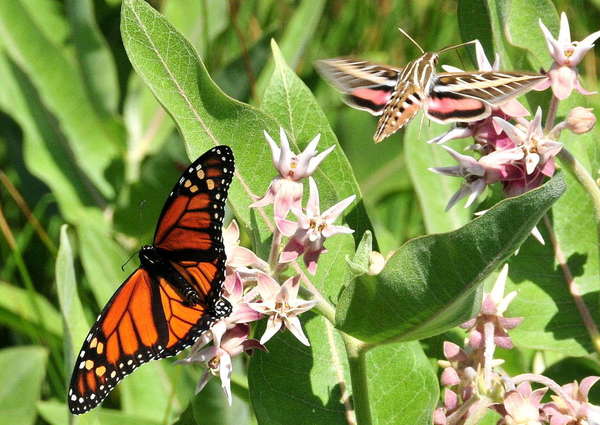 Native plants, like the milkweed pictured here, co-evolve with native insects, leading these plants to support more biodiversity than introduced plants. Public domain photo by USFWS Mountain-Prairie.
Native plants, like the milkweed pictured here, co-evolve with native insects, leading these plants to support more biodiversity than introduced plants. Public domain photo by USFWS Mountain-Prairie.Invasive plants thus not only can threaten other plant species through direct competition, and the species that depend on these plants, but also threaten native predators of insects, such as spiders and birds, by reducing their food sources.
By gathering naturalized herbs that are invasive in your area, you are utilizing a free resource, while also helping to reduce the negative impact that these plants have on the local ecology. Every amount of these herbs you harvest is removed from the ecosystem, allowing other plants to take their place.
Invasive herbs in North America and Puerto Rico
Shiso - Shiso, also called Perilla or beefsteak plant, is a plant in the mint family native to East Asia. It can be brewed as an herbal tea of its own, blended with green tea, or used as a seasoning or vegetable. Shiso is often found in forest clearings and shady areas along paths in the mid-atlantic. Shiso dries well.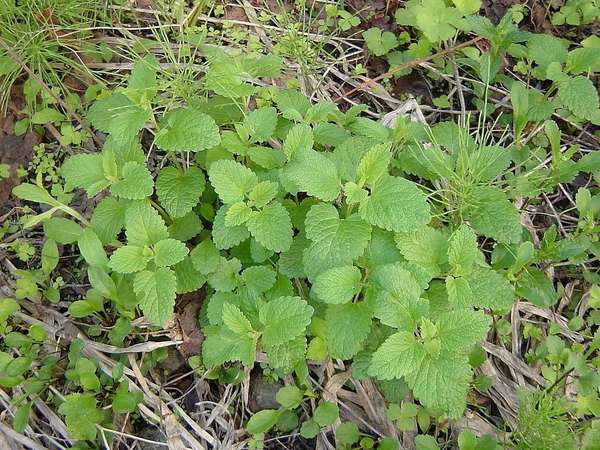 Lemon balm in Japan. This plant can become invaisve both in East Asia and North America. Photo © Aomorikuma (Wikimedia Commons), CC BY-SA 3.0.
Lemon balm in Japan. This plant can become invaisve both in East Asia and North America. Photo © Aomorikuma (Wikimedia Commons), CC BY-SA 3.0.Mints - There are mints native to North America and Puerto Rico, but the most commonly-consumed mints are invasive. These include spearmint, peppermint, and apple mint (wooly mint). Spearmint and peppermint are naturalized in most states across the US. Apple mint is slightly less widespread, but still naturalized in some areas of all parts of the US.
Nettles - There are both native and non-native populations of nettles in North America. All of the nettles of the Urtica genus found here are usable as an herbal tea. It can require some botanical knowledge to know whether or not you have found a native or non-native population, but if you are able to distinguish them, the non-native populations are another example of an invasive herb to harvest. Non-native nettles in North America have stinging hairs on the top of the the leaves (native populations only have hairs underneath), and cordate (heart-shaped) leaf bases. Be careful to use gloves when gathering these plants, because the fresh leaves are covered in stinging hairs.
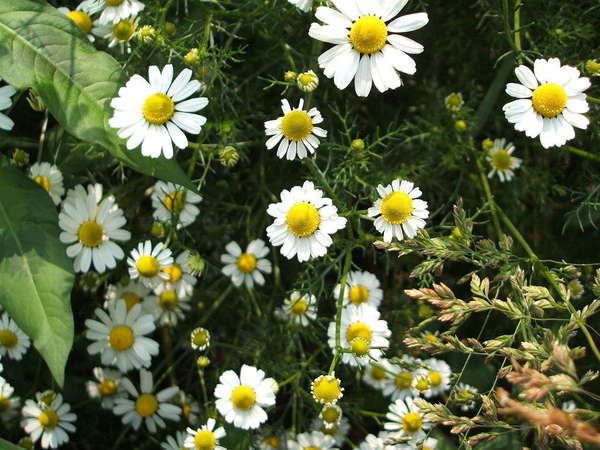 Matricaria recutita, or German chamomile, the herb most commonly used in tea. Photo © Simplicius (Wikimedia Commons), CC BY-SA 3.0.
Matricaria recutita, or German chamomile, the herb most commonly used in tea. Photo © Simplicius (Wikimedia Commons), CC BY-SA 3.0.Lemongrass - Lemongrass is a tropical plant, and cannot survive outdoors year-round in most of the U.S. However, it has become naturalized at the southernmost tip of Florida, in Dade county, after escaping cultivation. It also is naturalized in Puerto Rico.
Lemon verbena, a plant that only survives the winter in the warmer parts of North America, has become naturalized in California, Georgia, North Carolina, and Puerto Rico.
Hibiscus or roselle - There are many species of hibiscus, including some native to North America. Roselle, the type used in herbal tea, is a tropical plant, and cannot survive in the wild in most of North America. However, it is naturalized in southern Florida and Puerto Rico.
Tulsi or Holy basil - Tulsi, Ocimum sanctum or Ocimum tenuiflorum, is a species of basil native to India. It is invasive in Puerto Rico, and can sometimes reproduce in gardens in the continental U.S., although it has not yet become naturalized there.
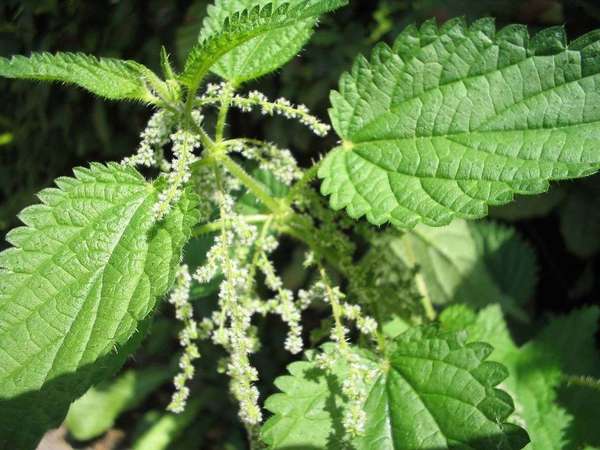 Urtica dioica, or stinging nettle, of the European variety. This variety is native in Europe, but invasive in North America; both native and non-native varieties can be found in North America. Photo © (Assumed) Migas (Wikimedia Commons), CC BY 3.0.
Urtica dioica, or stinging nettle, of the European variety. This variety is native in Europe, but invasive in North America; both native and non-native varieties can be found in North America. Photo © (Assumed) Migas (Wikimedia Commons), CC BY 3.0.How to tell or look up which plants are native or introduced
In North America, the best resource is the USDA plants database. This website has a profile for most plants that occur in North America, and it codes them N for Native and I for introduced or invasive, or both for when both native and introduced populations exist.In other regions
Whether or not a plant is invasive depends hugely on where you are. If you live in a region not represented by this guide, keep in mind that some of the herbs here may be native to your region. If you find herbs growing in the wild, look up where they are native to, and focus on harvesting only the herbs that are invasive in your area. A plant that is invasive in one area is always native somewhere, and in some cases, a plant invasive on one continent may be rare or threatened in its native range.Use only verifiable scientific sources because popular knowledge can contain myths about what plants are or are not native to a particular area.
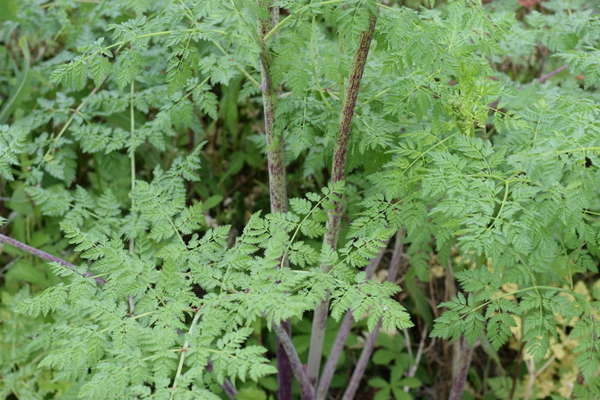 Conium maculatum, or poison hemlock. This plant is deadly poisonous; its foliage looks a lot like that of parsley, the plant also can be confused with carrots or parsnips, and the seedheads look a lot like fennel and other spices. Plants like this illustrate the importance of being absolutely certain about identification before consuming any plant found in the wild.
Conium maculatum, or poison hemlock. This plant is deadly poisonous; its foliage looks a lot like that of parsley, the plant also can be confused with carrots or parsnips, and the seedheads look a lot like fennel and other spices. Plants like this illustrate the importance of being absolutely certain about identification before consuming any plant found in the wild.Be cautious with plant ID!
Never use a wild-harvested plant in herbal tea unless you are absolutely certain that you have identified it correctly. Most of the plant families that contain common herbs, such as the mint family and daisy family, also contain some poisonous plants. It is safest to first become very familiar with a plant, such as by growing it yourself, and spending extensive time studying it and similar looking plants, before you consider harvesting it from the wild.Other issues of concern with wild-harvesting plants
Harvesting wild plants brings legal, health, and ecological concerns.Legal and health concerns
It is important to get the permission of property owners before harvesting any wild plants from private property. Both on public and private property, there can also be a concern with herbicides and other chemical contaminants. This is a particular concern when harvesting invasive species, as property owners and management teams of parkland or government- and non-profit-owned nature preserves sometimes spray herbicides on invasive plants as a way to control them.Some nature preserves and wild areas are on brownfield sites that can have various soil contaminants that can become concentrated in the foliage of plants that grow in these areas. Areas adjacent to roads with heavy traffic can also be contaminated from pollutants in exhaust or runoff from the road.

